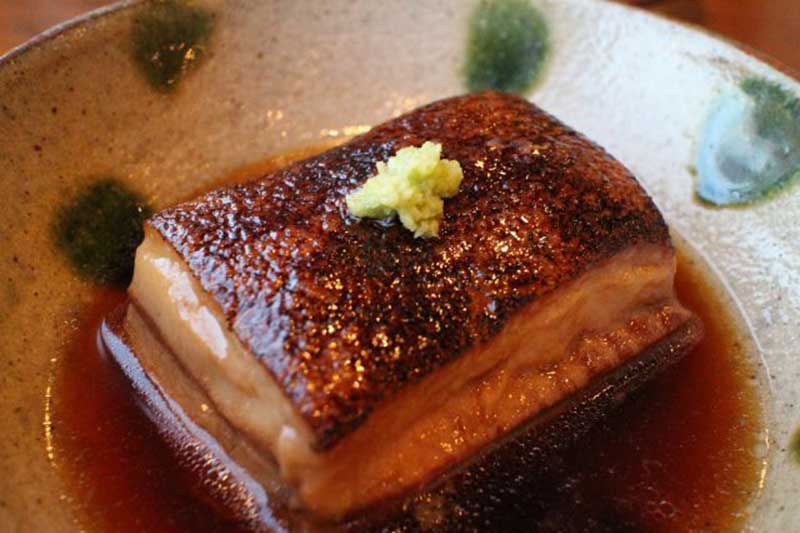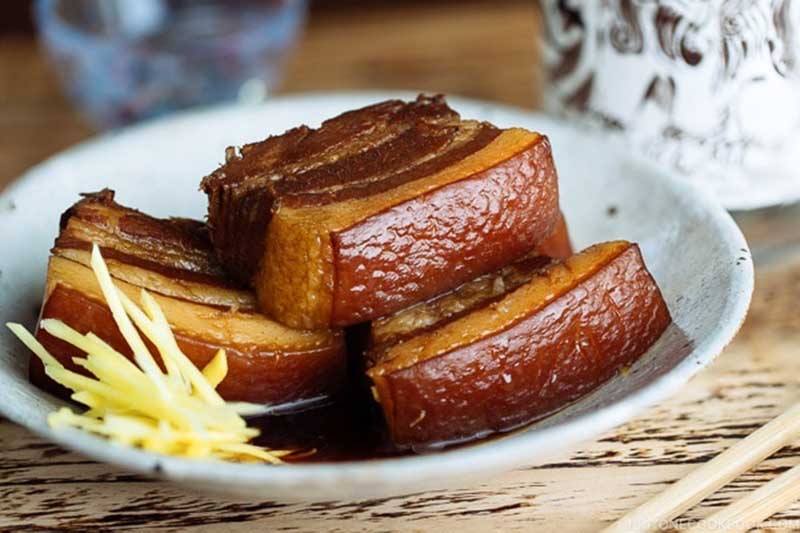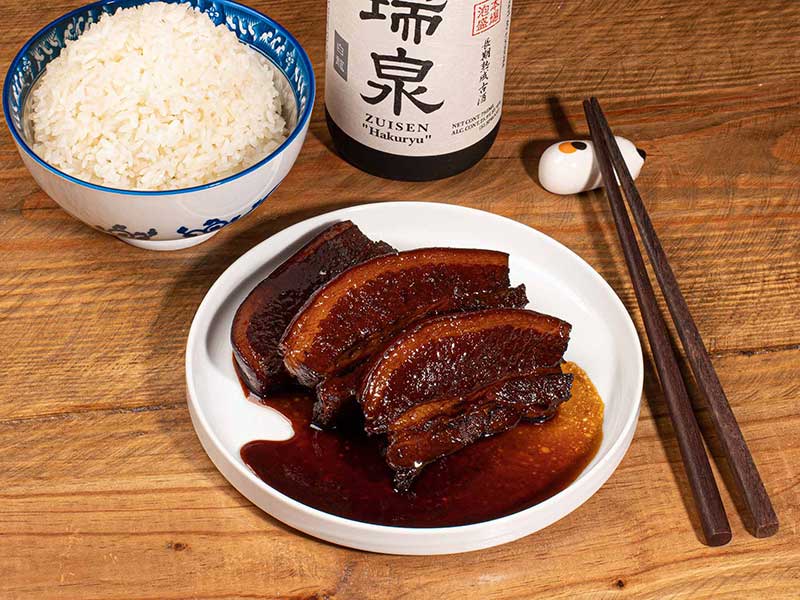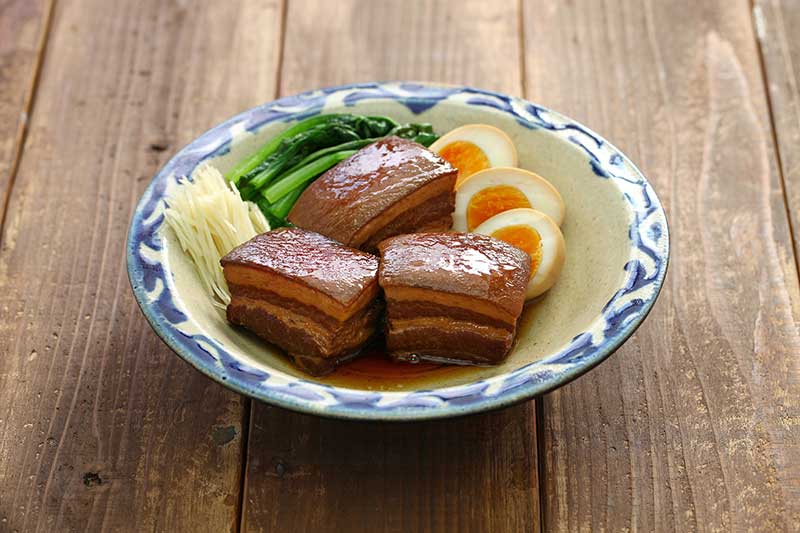Master the Art of Slow-Cooked Pork Belly
Introduction
Slow-cooked pork belly is a culinary delight that combines rich flavors and irresistible texture. The slow and low cooking method breaks down the collagen in the meat, resulting in a fork-tender consistency. The fat in the pork belly adds incredible flavor and moisture, making it a favorite among food enthusiasts.What is Slow-Cooked Pork Belly?
Slow-cooked pork belly refers to the process of cooking pork belly at a low temperature over an extended period. The slow cooking allows the collagen in the meat to break down, resulting in tender meat that is packed with flavor. The fat content of the pork belly keeps the meat moist and succulent, making it a popular choice for many dishes.Choosing the Right Cut of Pork Belly
When it comes to slow-cooking pork belly, choosing the right cut is crucial. Look for a piece of pork belly with an even thickness and a good balance of meat and fat. Ideally, the fat should have a creamy white color and be evenly distributed throughout the meat. This ensures that the pork belly will cook evenly and have the desired texture.
Preparing the Pork Belly
Before slow-cooking the pork belly, it’s essential to prepare it properly. Start by rinsing the pork belly under cold water and patting it dry with paper towels. If the skin is still attached, score it with a sharp knife to help render out the fat during cooking. Season the pork belly with salt and pepper or any desired dry rub to enhance the flavors.Marinating the Pork Belly
Marinating the pork belly is optional but can add an extra layer of flavor to the meat. You can use a variety of marinades, such as soy-based marinades with garlic and ginger, or citrus-infused marinades with herbs and spices. Place the pork belly in a resealable plastic bag or a shallow dish and let it marinate in the refrigerator for at least a few hours or overnight for maximum flavor infusion.
Slow-Cooking Techniques
There are several methods you can use to slow-cook pork belly, depending on the equipment you have available. Here are three popular techniques:Oven Method
Preheat your oven to a low temperature, around 275°F (135°C). Place the prepared pork belly on a roasting rack set inside a roasting pan. Cook the pork belly for several hours, depending on its size, until it is tender and the fat has rendered out. Baste the pork belly occasionally with its own juices to keep it moist.Slow Cooker Method
If you have a slow cooker, it can be an excellent tool for slow-cooking pork belly. Place the prepared pork belly in the slow cooker, fat side up. Cook it on low heat for 6 to 8 hours or on high heat for 4 to 5 hours until it is fork-tender and the fat has rendered out.Sous Vide Method
For precise and consistent results, consider using a sous vide machine. Season the prepared pork belly and vacuum-seal it in a bag. Set the sous vide machine to the desired temperature, usually around 165°F (74°C), and cook the pork belly for 12 to 24 hours. Afterward, sear the pork belly in a hot skillet or under a broiler to achieve a crispy exterior.Enhancing the Flavors
To take your slow-cooked pork belly to the next level, consider enhancing the flavors with various seasonings and marinades. Here are a few options:Dry Rubs and Seasonings
Create a dry rub by combining herbs, spices, salt, and sugar. Some popular choices include a mix of paprika, brown sugar, garlic powder, and cayenne pepper. Rub the mixture onto the pork belly before cooking to infuse it with a delicious blend of flavors.Liquid Marinades
Marinades can add depth and complexity to the pork belly’s taste. Use ingredients like soy sauce, Worcestershire sauce, honey, vinegar, and herbs to create a flavorful liquid marinade. Let the pork belly soak in the marinade before cooking to absorb the delicious flavors.
Slow-Cooking Tips and Tricks
To ensure the best results when slow-cooking pork belly, keep these tips and tricks in mind:Low and Slow Cooking
The key to tender and flavorful slow-cooked pork belly is low and slow cooking. Cooking at a low temperature for an extended period allows the collagen to break down gradually, resulting in tender meat.Basting and Turning
During the cooking process, baste the pork belly with its own juices or marinade to keep it moist and infuse it with flavor. If possible, turn the pork belly occasionally to ensure even cooking and browning.Resting and Slicing
After cooking, let the pork belly rest for a few minutes to allow the juices to redistribute and the meat to become more tender. When slicing, aim for thin, uniform slices to showcase the layers of fat and meat.Serving Suggestions
Slow-cooked pork belly is a versatile dish that can be enjoyed in various ways. Here are some serving suggestions:Side Dishes
Serve the pork belly alongside flavorful side dishes such as roasted vegetables, mashed potatoes, or steamed rice. The rich and succulent pork belly pairs well with the freshness of salads or the creaminess of pureed vegetables.Sauces and Condiments
Enhance the flavors further by serving the pork belly with complementary sauces or condiments. Try homemade barbecue sauce, hoisin sauce, or a tangy apple cider glaze. These additions can take the dish to new heights.The Perfect Toast Skagen Recipe
Frequently Asked Questions (FAQs)
Can I use frozen pork belly for slow cooking?
It’s best to use fresh pork belly for slow cooking to ensure the best texture and flavor. Thaw frozen pork belly thoroughly before cooking.How long can I store slow-cooked pork belly?
You can store slow-cooked pork belly in an airtight container in the refrigerator for up to 3-4 days. Reheat it gently to retain its tenderness.Can I use the rendered fat for other cooking purposes?
Absolutely! The rendered fat from slow-cooked pork belly is incredibly flavorful and can be used for roasting vegetables, frying, or adding flavor to other dishes.Can I achieve a crispy skin when slow-cooking pork belly?
Achieving a crispy skin can be challenging with slow-cooking methods alone. To crisp up the skin, you can finish the pork belly under a broiler or in a hot skillet for a few minutes.Can I freeze slow-cooked pork belly?
Yes, you can freeze slow-cooked pork belly for up to 2-3 months. Make sure to wrap it tightly in freezer-safe packaging to prevent freezer burn.Is Yakiniku Grill a Suitable Method for Cooking Pork Belly Slowly?
Yakiniku grill: the art revealed. Cooking pork belly slowly creates a tender texture and enhances its flavors. With the yakiniku grill, this method is not only suitable but also exceptional. The grill allows the meat to cook evenly while preserving its juiciness. Experience the mastery of yakiniku grill and savor the exquisite taste of slow-cooked pork belly.












